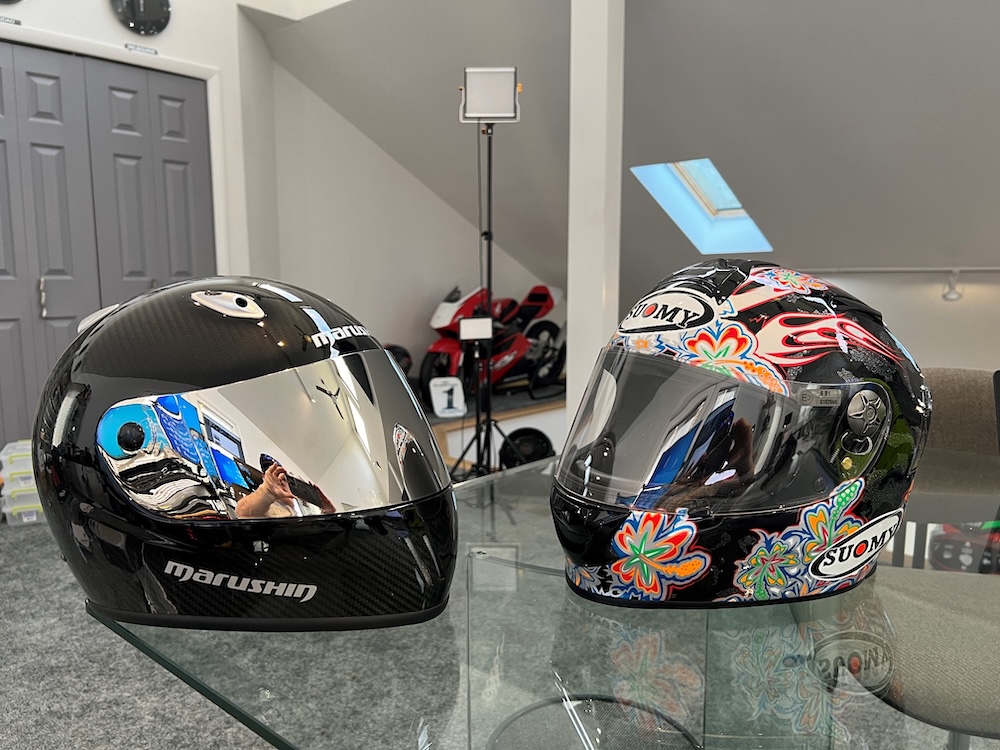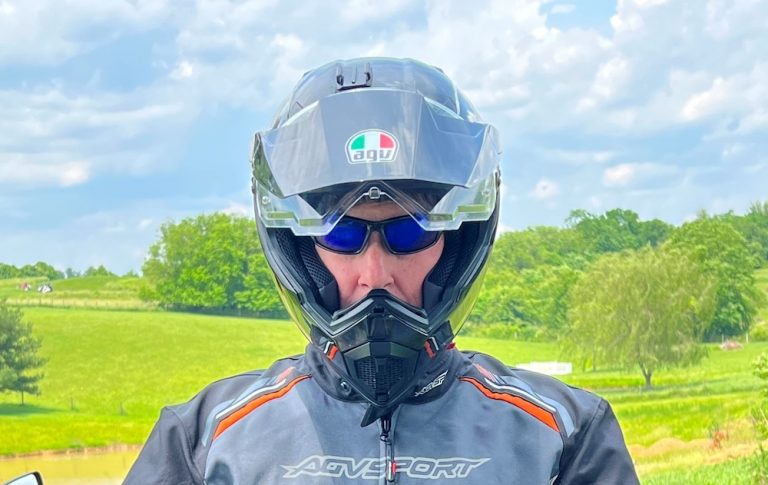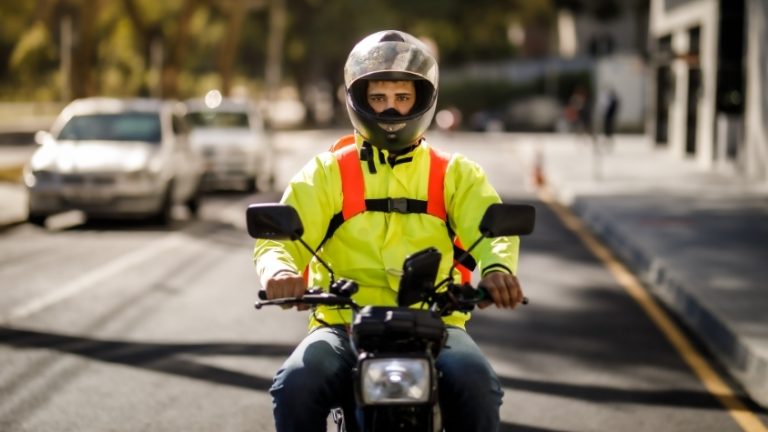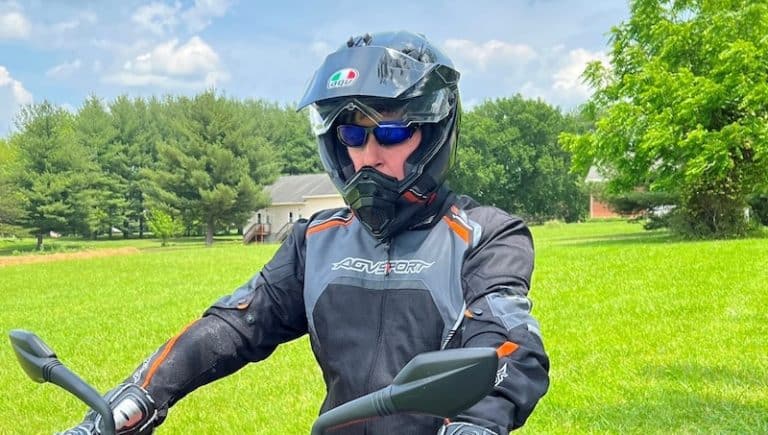Good motorcycle helmets are not exactly cheap, even if there are affordable ones. If you have crashed your helmets before, you may be tempted to keep using them. Can you use a motorcycle helmet after a crash?
Generally, don’t use a motorcycle helmet after a crash. The EPS liner inside the helmet may no longer be able to do its job and protect you in future crashes. It is better to get a new helmet instead.
In this post, I explore the question of whether you can use a motorcycle helmet after a crash in more detail.
How Is A Motorcycle Helmet Constructed?
Motorcycle helmets may have variations here and there, but in general, I would say they all have these four major parts to protect your head:
Outer Shell
This is the part you see on a motorcycle helmet. Affordable helmets usually use polycarbonate plastics, while higher-quality ones use fiberglass. There are also helmets with outer shells made from carbon fiber.
If you pick up a premium helmet, you may see a blend of materials, often proprietary to the maker. Shoei, for example, uses layers of fiberglass, organic fibers, and resin for their outer shell.
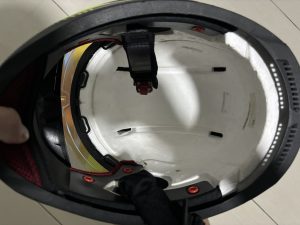
Impact Absorbing Liner
While the outer shell is hard and capable of handling abrasive materials and daily use, the inner shell deals with impact. These are usually called impact-absorbing liners and are commonly made of expanded polystyrene (EPS).
Premium helmets combine EPS layers of different density levels to provide even better impact absorption in the event of a crash.
Comfort Liner
The comfort liner is what you see on the inner side of your helmet. Since this layer makes contact with your hair and head, it is usually soft and comfortable. Many helmets also have unique lines cut into the liner for ventilation and to accommodate eyewear.
Most of these comfort liners are made with foam pads, often treated to be highly sweat-absorbing. Some are also antibacterial.
Chinstrap
Finally, you have the chinstrap. The chinstrap does not protect your head directly, but a well-fastened chinstrap can keep the helmet with your head during a crash.
A snuggly fit helmet will be able to perform its job better, and it starts with you strapping up your chinstrap well.

What Happens To A Motorcycle Helmet During A Crash?
Your motorcycle helmet works in a series of processes to protect your head during a crash. When combined, these processes reduce the risk of head and brain injury.
The Initial Contact
The moment you get involved in a crash, the outer shell of your helmet is the first part that comes into contact with the impact surface—this could be the ground or an object.
Here, the outer shell’s main task is not so much on the absorption side but on dispersing the initial force of the impact across a wider area.
If you remember your physics from school, the larger the impact area, the less energy is transferred. Apply this logic to helmets, and you will see that a larger impact area means less energy delivered to your head.
The outer shell is also often rigid and strong enough to withstand abrasions that may occur during a crash, such as if your helmet slides across the tarmac. This protects your face and head from surface injuries.
Impact Absorption
The outer shell is hard, which means it does not absorb impacts as well as softer materials. For this job, the impact-absorbing liner comes in.
Usually made of expanded polystyrene (EPS), this layer compresses when applying energy. As it compresses and deforms, it absorbs kinetic forces delivered during the crash, ultimately reducing the energy reaching your skull.
Mitigate Rotational Forces
Aside from the direct kinetic force, helmets also need to contend with rotational forces. Rotational forces can cause serious head and brain injury, such as diffuse axonal injury.
Helmets usually mitigate this by allowing a certain degree of sliding movement between the inner layer and outer shell.
One of the most popular technologies for reducing rotational forces is the MIPS (Multi-directional Impact Protection System). Some helmet makers like to create variations and then give it a different name. Here’s the MIPS explained, using a bicycle helmet.
<iframe width=”560″ height=”315″ src=”https://www.youtube.com/embed/P2qMwVE1XP8?si=wkReu2hIIbU91Ca3″ title=”YouTube video player” frameborder=”0″ allow=”accelerometer; autoplay; clipboard-write; encrypted-media; gyroscope; picture-in-picture; web-share” referrerpolicy=”strict-origin-when-cross-origin” allowfullscreen></iframe>
Keeping The Helmet In Place
Finally, none of the layers can do their job if they are not secured to your head well. This is the job of your chinstrap. There’s a reason why you always hear the advice to buckle up and to buckle up properly.
In the event of a head injury, the chinstrap also helps to keep the helmet from moving post-crash to avoid aggravating the injury.
Can You Use A Motorcycle Helmet After A Crash?
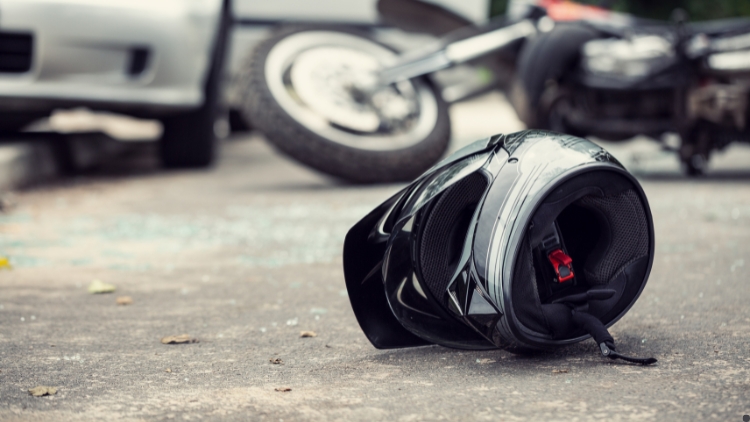
Now that we have looked at how a motorcycle helmet protects your head during a crash, the next natural question is: Can you use a motorcycle helmet after a crash?
The short answer is no. During a crash, the EPS liner would have collapsed upon itself to absorb any impact, which means it has deformed and become compressed.
A compressed EPS can no longer be compressed much further, meaning it has lost its ability to absorb impact and protect your head.
If your helmet has an MIPS-like system, the material bonding your outer shell and the inner layer may have deformed. This means the helmet will not be able to manage rotational forces as well as before the crash. Your helmet’s outer layer may also look pretty ugly after a crash, especially if dragged through the tarmac or subjected to strong impact.
It may not be too far-fetched to say this, but a crashed helmet may be useless in protecting your head; you might as well not wear anything. Just don’t use a motorcycle helmet after a crash.
I would say the best thing to do with your helmet after a crash is to either throw it away or you can keep it as a ‘memento’ of the crash. But never wear them again – get a new motorcycle helmet instead.
Can You Use A Dropped Helmet?
Now that we have established that you should never use a motorcycle helmet after a crash, what about dropped ones?
My answer would be – it depends on the force you send to the helmet during the drop. The larger the force, the more you should not use it.
This is because when you subject some kinetic energy to the helmet, you may cause the impact absorption layer to do its job—if you drop the helmet hard enough, the EPS layer may compress and deform.
In this case, you might as well consider the helmet ‘crashed,’ as it may no longer provide your head the best protection it used to.
The issue here is that you generally cannot see if the EPS layer has deteriorated, as they are quite hard to remove from the helmet to inspect. The best way to decide if the helmet is still ok is to use your gut instinct.
I would say that if you drop your helmet accidentally, say from the corner of your table or from your hands, you may still be able to reuse it.
If unsure about this, listen to your gut instinct and pick up a new helmet. You may thank yourself later when you get into an accident with a new helmet.
Can I Continue Using Helmets Without A Crash History?
Another question you may think about is if you never ever get into a crash, nor was it ever dropped, can you continue using it?
Motorcycle Safety Foundation (MSF) recommends replacing your helmet every few years for optimum protection.
If you frequently wear the helmet, you should lean on this guidance more strictly than, say, if you rarely use your helmets. The reason? Your helmet deteriorates much faster from heavier use.
I think MSF’s suggestion is good guidance for several reasons:
Your Helmet May Have Deteriorated: We subject our helmets to harsh treatment—think sunlight, drops, etc. Over time, the EPS and outer shell may have deteriorated, giving you less protection.
You Benefit From New Safety Standards: Helmet safety standards do improve over time. You benefit from these newer safety technologies and standards by getting new helmets frequently.
Hygienic Reasons: Although helmet liners are removable for washing, it can be hard to remove everything to clean up. If you change to a new helmet, you at least get a fresh start.
When In Doubt, Get A New Helmet
There you have it. In this article, I answered whether you can use a motorcycle helmet after a crash. The simple answer is no. You may also not want to wear dropped helmets if the impact is strong.
The key is always to err on the side of caution – if in doubt, get a new helmet. It is usually not worth it to use a motorcycle helmet after a crash. Changing helmets every few years helps you get a fresh start while benefitting from the latest safety technologies for helmets, too.
Suppose you see the need for a new helmet, consider checking out some of my reviews on the best helmets in the market today:
Michael’s Summary and Conclusion
Information for this article was partially sourced and researched from the following authoritative government agencies, educational institutions, and nonprofit organizations:


